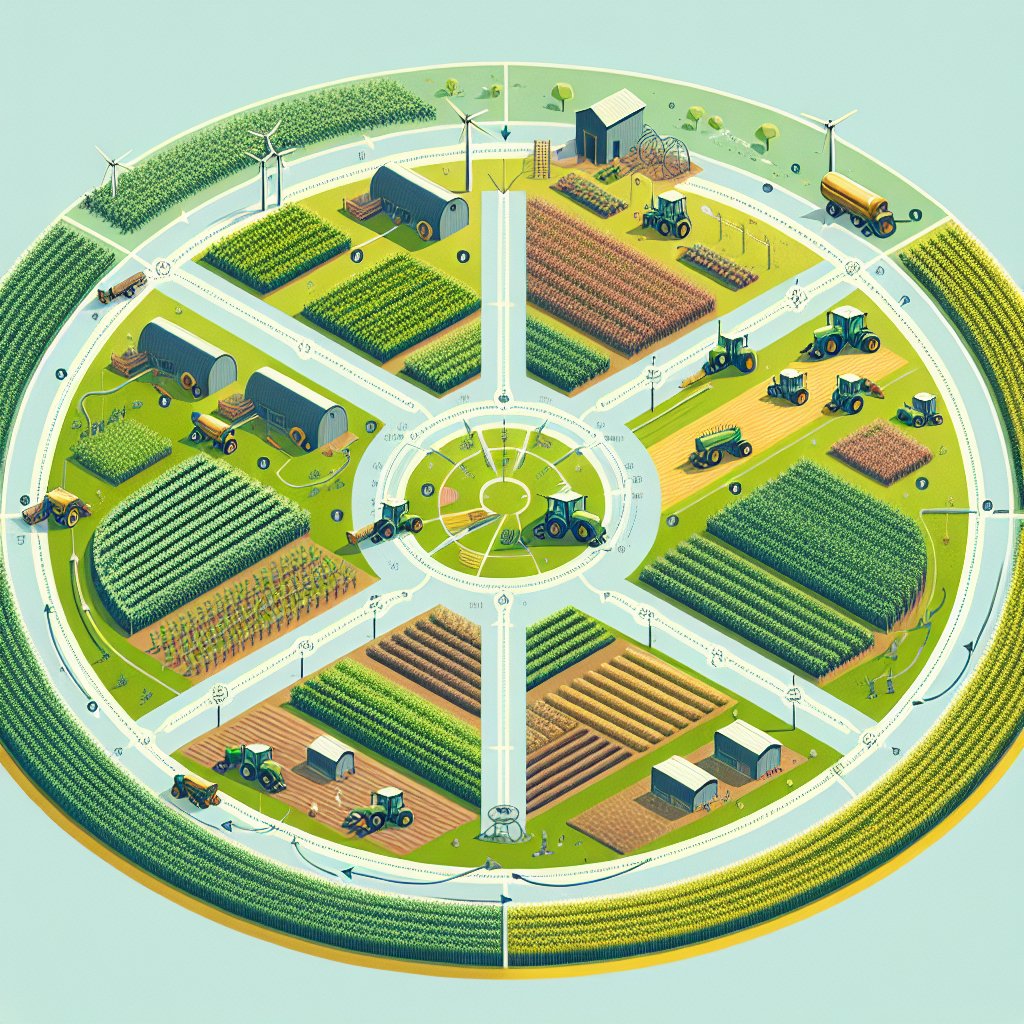
Crop rotation is a time-tested agricultural practice that plays a crucial role in sustainable farming. By strategically alternating the types of crops grown on a particular piece of land, farmers can enhance soil health, reduce pest and disease pressures, and improve overall farm productivity. This article delves into the best crop rotation strategies that can be employed to achieve sustainable farming goals.
Understanding Crop Rotation
Crop rotation involves the systematic planting of different crops in a specific sequence on the same land over several growing seasons. This practice is rooted in the understanding that different crops have varying nutrient requirements and pest and disease profiles. By rotating crops, farmers can break pest and disease cycles, improve soil fertility, and optimize the use of available resources.
One of the primary benefits of crop rotation is its ability to enhance soil health. Different crops contribute to soil structure and nutrient content in unique ways. For instance, legumes such as beans and peas have the ability to fix atmospheric nitrogen, enriching the soil with this essential nutrient. When these crops are rotated with nitrogen-demanding plants like corn or wheat, the need for synthetic fertilizers is reduced, promoting a more sustainable farming system.
Moreover, crop rotation can significantly reduce the incidence of pests and diseases. Many pests and pathogens are host-specific, meaning they thrive on particular crops. By changing the crop type, farmers can disrupt the life cycles of these pests and diseases, reducing their populations and minimizing the need for chemical interventions.
Designing Effective Crop Rotation Plans
Designing an effective crop rotation plan requires careful consideration of several factors, including soil type, climate, crop compatibility, and market demands. A well-planned rotation not only addresses agronomic concerns but also aligns with the economic goals of the farm.
One common approach to crop rotation is the use of a three-year or four-year cycle. In a three-year cycle, for example, a farmer might plant a nitrogen-fixing legume in the first year, followed by a cereal crop in the second year, and a root crop in the third year. This sequence helps balance nutrient levels in the soil and reduces pest and disease pressures.
Another strategy is to incorporate cover crops into the rotation. Cover crops, such as clover or rye, are planted during the off-season to protect and enrich the soil. They help prevent erosion, suppress weeds, and improve soil structure. When integrated into a crop rotation plan, cover crops can enhance the sustainability of the farming system.
Farmers should also consider the compatibility of crops when designing their rotation plans. Some crops, when grown in succession, can lead to allelopathy, where one plant releases chemicals that inhibit the growth of another. Understanding these interactions is crucial for avoiding negative impacts on crop yields.
Case Studies and Real-World Applications
Several successful case studies highlight the benefits of crop rotation in sustainable farming. For instance, a study conducted in the Midwest United States demonstrated that rotating corn and soybeans with cover crops resulted in improved soil health and increased yields. The inclusion of cover crops in the rotation helped reduce soil erosion and enhanced water retention, leading to more resilient farming systems.
In Europe, farmers have adopted diverse crop rotation systems to address specific regional challenges. In the United Kingdom, for example, farmers have implemented rotations that include wheat, barley, and oilseed rape, along with legumes and cover crops. This approach has helped mitigate the impact of pests and diseases while maintaining soil fertility.
In developing countries, crop rotation is often integrated with traditional farming practices to enhance food security and resilience. In sub-Saharan Africa, smallholder farmers use crop rotation to manage soil fertility and reduce the risk of crop failure. By rotating staple crops like maize with legumes and tubers, these farmers can improve their yields and diversify their food sources.
Challenges and Considerations
While crop rotation offers numerous benefits, it is not without challenges. One of the primary obstacles is the need for careful planning and management. Farmers must have a deep understanding of their soil, climate, and crop interactions to design effective rotation plans. Additionally, market demands and economic considerations can influence crop choices, sometimes limiting the flexibility of rotation systems.
Another challenge is the potential for increased labor and management requirements. Implementing a diverse crop rotation system may require more time and effort in terms of planning, planting, and harvesting. However, the long-term benefits of improved soil health and reduced pest pressures often outweigh these initial challenges.
Furthermore, transitioning to a crop rotation system may require changes in equipment and infrastructure. Farmers may need to invest in new machinery or storage facilities to accommodate different crops. Access to resources and technical support can be crucial in facilitating this transition.
Conclusion
Crop rotation is a powerful tool for achieving sustainable farming. By strategically alternating crops, farmers can enhance soil health, reduce pest and disease pressures, and improve overall farm productivity. While challenges exist, the benefits of crop rotation make it a valuable practice for farmers seeking to build resilient and sustainable agricultural systems. As the global demand for food continues to rise, adopting effective crop rotation strategies will be essential for ensuring food security and environmental sustainability.

